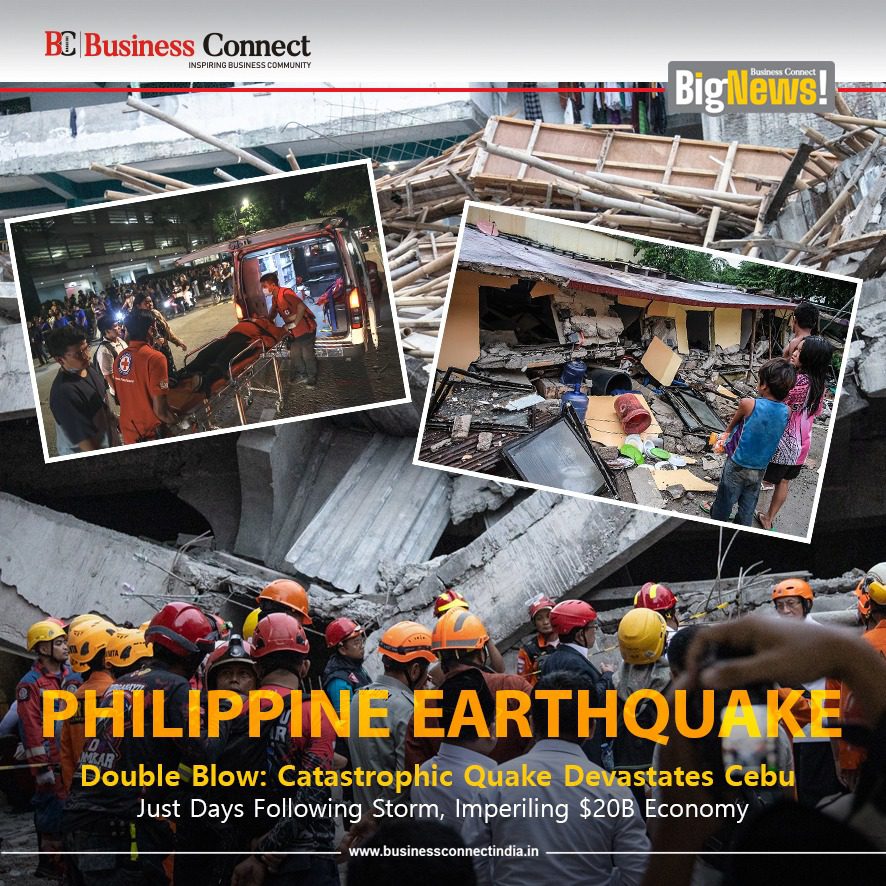In a bitter irony of nature’s wrath, the central Philippines’ Cebu province—already battered by back-to-back tropical storms that killed 27 people last week—has been hit by a deadly 6.9-magnitude earthquake, killing at least 69 individuals and wreaking havoc on a major economic driver of Southeast Asia. The evening Tuesday quake, with an epicenter 19 kilometers northeast of Bogo City, has toppled buildings, fissured essential infrastructure, and created shockwaves across the region’s booming business sector, where outsourcing titans and tourism destinations earn more than $20 billion every year.
The earthquake, which hit at about 10 p.m. local time, pinned residents in nightclubs, homes, and even a sports arena during a basketball game in San Remigio under crashing walls that killed five. In Bogo City, the worst hit city, 14 people were killed amid fallen buildings, while more than a dozen died in nearby Medellin from ceiling and wall collapses. Hospitals, such as the flooded Bogo facility, are clogged with over 150 injuries that complicate rescue operations during the heavy rains from the latest storms Bualoi and Ragasa. More than 600 aftershocks since have been battering the region and causing anxiety about more collapses and slowing down recovery.
For companies, the cost is accumulating quickly. Cebu’s position as the Philippines’ second-largest economic center—where world-class BPO companies such as Accenture and Convergys, which hire hundreds of thousands, are based—is threatened. Blackouts have plunged provinces into darkness, evacuating high-rise call centers and stopping business in Iloilo City and other places. Visible destruction to a number of business centers, such as extensive cracks in asphalt and concrete roads, compromises supply chains and logistics at the province’s busy ports, an economic lifeline for export. Tourism, which brings in millions to Cebu’s shores and heritage attractions, suffers an instant plunge as flights get canceled and hotels check for structural soundness.
The twin tragedy highlights the Philippines’ vulnerable position on the Pacific Ring of Fire, where seismic and weather-related hazards regularly derail progress. Cebu Governor Pamela Baricuatro stated that assessment of the damage could find costs higher than the 2013 Bohol earthquake, maybe even in the billions, taxing an economy that was still recovering from the pandemic wounds. The government has recalled a short tsunami warning and dispatched aid, but search-and-rescue equipment appeals in San Remigio underscore resource shortages. Overseas insurers prepare for claims, as investors look at how this might bruise the archipelago’s status as a nearshoring destination.
As aid workers burrow through wreckage and power workers rush to rebuild grids, the economic and human devastation calls for rapid corporate and governmental response. Charitable wings of multinationals such as JPMorgan and Google, with strong roots in Philippine operations, are already committing funds. To companies everywhere with a presence here, the message is clear: Diversify risk in disaster economies, or suffer the quake’s ruthless cost. Cebu has overcome empires before—since wrecking the Spanish and American Empires, but this double whammy puts even the resilient to the test.
Add Business Connect magazine to your Google News feed
Must Read:-
- Nisha Madhulika India’s richest female YouTuber!
- Larry Ellison of Oracle Suddenly Overtakes Elon Musk as the Richest Person in the World
- Top 10 Richest Comedians In India
- Top 10 Richest Pakistani Actress in 2025 – Who Is Your Favorite?
- Majhi Ladki Bahin Yojana 2025: Benefits, Registration & KYC Guide
- Mukhyamantri Majhi Ladki Bahin Yojana: Empowering Women in Maharashtra



